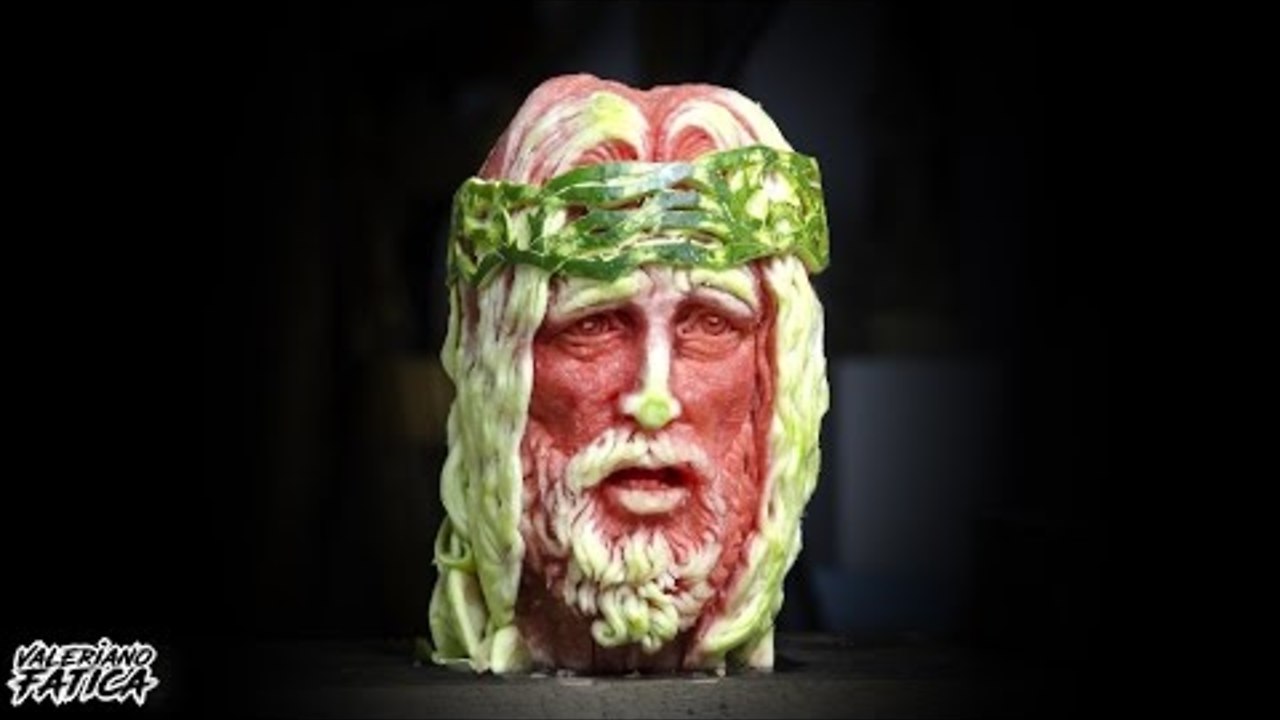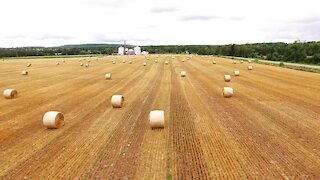Premium Only Content

Watermelon Carving Portrait Captures Face Of Jesus
Sweet, juicy and deliciously fragrant watermelon, this is perhaps, the most favorite summer dessert! This green and striped fruit paradoxically originates from the hottest and driest regions of Africa - the Kalahari and Namib deserts. There still grow wild watermelons, giving small and bitter fruits. The merit of bringing this tasty and appealing-looking fruit with red flesh belongs to the Egyptians, who about five thousand years ago began to grow watermelons as a cultural plant. From Egypt, watermelons have reached the countries of Southeast Asia: China, Japan, Thailand and gradually spread throughout the world.
Eastern rulers, known for their craving for luxury and splendor, showed great demand for food, which was supposed to be not only delicious but also beautifully designed. Therefore, cooks began decorating culinary products with bizarre patterns and cut out sculptures. The most popular material for carving was, of course, the watermelon, which has large dimensions and bright contrasting colors, thanks to which the final product looks very impressive.
At first, carved water-melons decorated tables of representatives of royal families and nobility, but eventually, they spread among representatives of all other classes. The art of watermelon carving was handed down from generation to generation, and with time, many talented craftsmen appeared, and they began to compete in their art.
The first carving championship for vegetables and fruits was organized in the 18th century by the King of Thailand, Rama I. Today, watermelon carvers' competitions are held not only in the East but also in Russia, Western Europe, and America. In the US, watermelon festivals are held in almost every state. This is a very bright and joyful holiday with colorful parades and fun contests, for example, by spitting watermelon seeds at a distance. However, the greatest number of spectators gather the competitions of carver craftsmen, who do not cease to amaze the world with new beautiful creations.
Watermelon sculptures look so amazing that it seems that it is very difficult to perform such a carving and you can learn the art of carving only for many years. Master mastered this art claim that anyone can learn, for this he will need patience, tools and a suitable watermelon.
Not every watermelon is suitable for creating carved masterpieces. It is necessary that its surface is perfectly smooth, without damage, sores and dents. The fruit should be ripe, but not overripe. The ripeness of watermelon is determined by a slight tapping on its crust, the sound must be deaf. The spot, formed on the side, which the watermelon lay on the ground, should be small and yellow, such fruits have the sweetest flesh. And, finally, the color of the fruit crust is important. It is desirable that it is dark or bright with saturated green strips.
Choosing a suitable watermelon in every way, you can start making carved water-melon masterpieces, which will become a magnificent decoration of the festive table.
Italian artist Valeriano Fatica carves mostly fruit and vegetables, but he also carves cheese, clay, and rock. Check out this absolutely phenomenal watermelon carving of Jesus Christ. Unreal!
-
 3:45
3:45
Timeless Aerial Photography
4 years agoDrone footage captures relaxing footage of frozen swamp
3.38K19 -
 0:33
0:33
Midnightscrollher
4 years agoJesus portrait
1022 -
 1:12
1:12
WildCreatures
5 years ago $0.03 earnedDrone captures unique perspective of rural farm during hay season
1.47K1 -
 1:54
1:54
ViralHog
5 years ago $0.54 earnedDrone Captures Beautiful Cape Town during Lockdown
1.75K2 -
 0:46
0:46
WildCreatures
5 years ago $4.01 earnedDrone footage captures shocking wind turbine damage after propeller explodes
8.97K34 -
 3:56
3:56
ViralHog
5 years ago $0.01 earnedPyrography Pet Portrait
73 -
 3:56
3:56
Squashcarver
4 years agoSquashcarver Christmas 'Holy Family' Jesus, Mary, and Joseph pumpkin carving time-lapse
113 -
 0:41
0:41
New York Post
4 years agoVideo captures FL airport brawl over face mask-related delay
1.09K13 -
 12:13
12:13
threestrikesurout
4 years agoNonograms - Watermelon
101 -
 1:05:02
1:05:02
vivafrei
2 hours agoCharlie Kirk Assassin ARRESTED! Universal Ostrich Farms UPDATE! And More!
27.6K61